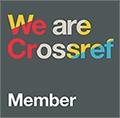Matematik Ders Kitaplarında Matematiksel Akıl Yürütme ve İspat
DOI:
https://doi.org/10.33308/26674874.2023372589Anahtar Kelimeler:
Akıl Yürütme ve İspat- Matematik Ders Kitabı- Ders Kitabı AnaliziÖzet
Matematik öğretme ve öğrenme sürecinde öğretmenlere kılavuz, öğrencilere yardımcı kaynak olan ders kitaplarındaki akıl yürütme ve ispatlama durumlarını analiz etmek, öğrencilerin akıl yürütme ve ispatlamayı öğrenme fırsatlarını anlamak için atılacak önemli adımlardan biridir. Bu araştırmada, Millî Eğitim Bakanlığının Eğitim Bilişim Ağından tüm öğrencilere sunduğu bir beşinci ve bir altıncı sınıf matematik ders kitabı incelenmiştir. Verilerin analizinde literatürdeki çalışmaların değerlendirme kriterleri esas alınarak araştırmacılar tarafından analitik çerçeve geliştirilmiştir. Bu kapsamda akıl yürütme ve ispat etkinlikleri, beşinci ve altıncı sınıf matematik öğrenme alanlarına, etkinliklerin amaçlarına ve olası argüman türlerine göre değerlendirilmiştir. Araştırmanın bulgularına göre, akıl yürütme ve ispata yönelik etkinlikler, beşinci ve altıncı sınıf ders kitaplarındaki tüm etkinliklerin sırasıyla %21 ve %13’ünü oluşturmaktadır. Sonuçta, matematik ders kitabı etkinliklerinde, akıl yürütme ve ispatın ağırlıklı yer almadığı görülmüştür.
İndirmeler
Referanslar
Akkan, Y. (2016). Cebirsel düşünme. E. Bingölbali, S. Arslan, & İ. Ö. Zembat (Ed.), Matematik eğitiminde teoriler (ss. 43-64) içinde. Pegem Akademi.
Alibert, D. (1988). Towards new customs in the classroom. For the Learning of Mathematics, 8(2), 31–35.
Amit, M., & Neria, D. (2008). Rising to the challenge: Using generalization in pattern problems to unearth the algebraic skills of talented pre-algebra students. ZDM, 40(1), 111-129. https://doi.org/10.1007/s11858-007-0069-5 DOI: https://doi.org/10.1007/s11858-007-0069-5
Askew, M., Hodgen, J., Hossain, S. & Bretscher, N. (2010). Values and variables: Mathematics education in high-performing countries. Nuffield foundation.
Aydoğdu-İskenderoğlu, T. (2016). Kanıt ve kanıt şemaları. E. Bingölbali, S. Arslan, & İ. Ö. Zembat (Ed.), Matematik eğitiminde teoriler (ss. 65-84) içinde. Pegem Akademi.
Balacheff, N. (1991). The benefits and limits of social interaction: The case of mathematical proof. In Mathematical knowledge: Its growth through teaching (pp. 173-192). Springer. https://doi.org/10.1007/978-94-017-2195-0_9 DOI: https://doi.org/10.1007/978-94-017-2195-0_9
Ball, D. L. (1993). With an eye on the mathematical horizon: Dilemmas of teaching elementary school mathematics. The Elementary School Journal, 93(4), 373-397. https://doi.org/10.1086/461730 DOI: https://doi.org/10.1086/461730
Barak, M., & Levenberg, A. (2016). A model of flexible thinking in contemporary education. Thinking Skills and Creativity, 22, 74-85. https://doi.org/10.1016/j.tsc.2016.09.003 DOI: https://doi.org/10.1016/j.tsc.2016.09.003
Baroody, A. J., & Costlick, R. T. (1998). Fostering children’s mathematical power. An investigative approach to K-8 mathematics instruction. Erlbaum. https://doi.org/10.4324/9781410602084 DOI: https://doi.org/10.4324/9781410602084
Begle, E. (1973). Some lessons learned by SMSG. Mathematics Teacher, 66, 207-214. https://doi.org/10.5951/MT.66.3.0207 DOI: https://doi.org/10.5951/MT.66.3.0207
Bieda, K. N., Ji, X., Drwencke, J., & Picard, A. (2014). Reasoning-and-proving opportunities in elementary mathematics textbooks. International Journal of Educational Research, 64, 71-80. https://doi.org/10.1016/j.ijer.2013.06.005 DOI: https://doi.org/10.1016/j.ijer.2013.06.005
CadwalladerOlsker, T. (2011). What do we mean by mathematical proof?. Journal of Humanistic Mathematics, 1(1), 33-60. https://doi.org/10.5642/jhummath.201101.04 DOI: https://doi.org/10.5642/jhummath.201101.04
Doğan, M. F. (2019). Opportunities to learn reasoning and proof in eighth-grade mathematics textbook. Inonu University Journal of the Faculty of Education, 20(2), 601-618. https://doi.org/10.17679/inuefd.527243 DOI: https://doi.org/10.17679/inuefd.527243
Fan, L. (2013). Textbook research as scientific research: Towards a common ground on issues and methods of research on mathematics textbooks. ZDM, 45(5), 765-777. https://doi.org/10.1007/s11858-013-0530-6 DOI: https://doi.org/10.1007/s11858-013-0530-6
Fan, L., Zhu, Y., & Miao, Z. (2013). Textbook research in mathematics education: Development status and directions. ZDM, 45(5), 633-646. https://doi.org/10.1007/s11858-013-0539-x DOI: https://doi.org/10.1007/s11858-013-0539-x
Fischbein, E. (1999). Intuitions and schemata in mathematical reasoning. Educational Studies in Mathematics, 38(1-3), 11-50. https://doi.org/10.1023/A:1003488222875 DOI: https://doi.org/10.1007/978-94-017-1584-3_2
Fraenkel, J. R., Wallen, N. E., & Hyun, H. H. (2012). How to design and evaluate research in education. McGraw-hill.
Fujita, T., & Jones, K. (2014). Reasoning-and-proving in geometry in school mathematics textbooks in Japan. International Journal of Educational Research, 64, 81-91. https://doi.org/10.1016/j.ijer.2013.09.014 DOI: https://doi.org/10.1016/j.ijer.2013.09.014
Hanna, G. (1989). More than formal proof. For the Learning of Mathematics, 9(1), 20-23.
Hanna, G. (1990). Some pedagogical aspects of proof. Interchange, 21, 6-13. https://doi.org/10.1007/BF01809605 DOI: https://doi.org/10.1007/BF01809605
Hanna, G. (2000). Proof, explanation and exploration: An overview. Educational Studies in Mathematics, 44, 5-23. https://doi.org/10.1023/A:1012737223465 DOI: https://doi.org/10.1023/A:1012737223465
Hanna, G. (2020). Mathematical proof, argumentation, and reasoning. Encyclopedia of Mathematics Education, 561-566. https://doi.org/10.1007/978-3-030-15789-0_102 DOI: https://doi.org/10.1007/978-3-030-15789-0_102
Harel, G., & Sowder, L. (1998). Students’ proof schemes: Results from exploratory studies. In A. Schoenfeld, J. Kaput, & E. Dubinsky (Ed.), Research in collegiate mathematics education III, (pp. 234-283). American Mathematical Society. DOI: https://doi.org/10.1090/cbmath/007/07
Harel, G., & Sowder, L. (2007). Toward comprehensive perspectives on the learning and teaching of proof. In F. Lester (Ed.), Second handbook of research on mathematics teaching and learning, (pp. 805-842). National Council of Teachers of Mathematics.
Hersh, R. (1993). Proving is convincing and explaining, Educational Studies in Mathematics, 24, 389-399. https://doi.org/10.1007/BF01273372 DOI: https://doi.org/10.1007/BF01273372
Hiebert, J., & Lefevre, P. (1986). Conceptual and procedural knowledge in mathematics: An introductory analysis. In J. Hiebert (Eds.), Conceptual and procedural knowledge: The case of mathematics, (pp. 1-27). Erlbaum.
Hong, D. S., & Choi, K. M. (2018). Reasoning and Proving Opportunities in Textbooks: A Comparative Analysis. International Journal of Research in Education and Science, 4(1), 82-97. https://doi.org/10.21890/ijres.382937 DOI: https://doi.org/10.21890/ijres.382937
Jeannotte, D., & Kieran, C. (2017). A conceptual model of mathematical reasoning for school mathematics. Educational Studies in Mathematics, 96(1), 1-16. https://doi.org/10.1007/s10649-017-9761-8 DOI: https://doi.org/10.1007/s10649-017-9761-8
Johansson, M. (2003). Textbooks in mathematics education: A study of textbooks as the potentially implemented curriculum [Unpublished doctoral dissertation]. Luleå Tekniska Universitet.
Karakuş, F., & Korkutan, E. (2021). Ortaokul matematik ders kitaplarında geometri ve ölçme konularına yönelik yapılan ispatların muhakeme ve ispat analitik çerçevesi kapsamında incelenmesi. Manisa Celal Bayar Üniversitesi Eğitim Fakültesi Dergisi, 9(1), 1-16. https://doi.org/10.52826/mcbuefd.840090 DOI: https://doi.org/10.52826/mcbuefd.840090
Kilpatrick, J. (1996). Introduction to Section 1. In A. J. Bishop, K. Clements, C. Keitel, J. Kilpatrick & C. Laborde (Ed.), International handbook of mathematics education, (pp. 7-10), (Vol. 4). Kluwer. DOI: https://doi.org/10.1007/978-94-009-1465-0_2
Knuth, E. J. (2002). Secondary school mathematics teachers’ conceptions of proof. Journal for Research in Mathematics Education, 33(5), 379-405. https://doi.org/10.2307/4149959 DOI: https://doi.org/10.2307/4149959
Komatsu, K. (2016). A framework for proofs and refutations in school mathematics: Increasing content by deductive guessing, Educational Studies in Mathematics, 92(2), 147-162. https://doi.org/10.1007/s10649-015-9677-0 DOI: https://doi.org/10.1007/s10649-015-9677-0
Küchemann, D., & Hoyles, C. (2006). Influences on students' mathematical reasoning and patterns in its development: insights from a longitudinal study with particular reference to geometry. International Journal of Science and Mathematics Education, 4(4), 581-608. https://doi.org/10.1007/s10763-006-9039-6 DOI: https://doi.org/10.1007/s10763-006-9039-6
Lampert, M. (1990). When the problem is not the question and the solution is not the answer: Mathematical knowing and teaching. American Educational Research Journal, 27(1), 29-63. https://doi.org/10.3102/00028312027001029 DOI: https://doi.org/10.3102/00028312027001029
Lithner, J. (2000). Mathematical reasoning in task solving. Educational Studies in Mathematics, 41(2), 165-190. https://doi.org/10.1023/A:1003956417456 DOI: https://doi.org/10.1023/A:1003956417456
Manin, Y. (1977). A course in mathematical logic, Springer-Verlag. DOI: https://doi.org/10.1007/978-1-4757-4385-2
Manin, Y. (1992, August, 17-23). Contribution in panel discussion on “The theory and practice of proof”. In C. Gaulin, B. R. Hodgson, D. H. Wheeler, J. C. Egsgard (Ed.), Proceedings of the seventh International Congress on Mathematical Education, Québec.
Mariotti, M. A. (2006). Proof and proving in mathematics education. In A. Gutiérrez & P. Boero (Ed.), Handbook of research on the psychology of mathematics education (pp. 173-204). Brill. DOI: https://doi.org/10.1163/9789087901127_008
Mason, J. (2001). Questions about mathematical reasoning and proof in schools. http://xtec.cat/centres/a8005072/articles/proof_and_reasoning.pdf
Merzbach, U. C., & Boyer, C. B. (2011). A history of mathematics (3. Ed.). Wiley.
Miles, M. B., & Huberman, A. M. (1994). Qualitative data analysis, Sage Publications.
Millî Eğitim Bakanlığı [MEB] (2018a). Matematik Dersi 1-8. Sınıflar Öğretim Programı. MEB Talim ve Terbiye Kurulu Başkanlığı.
Millî Eğitim Bakanlığı [MEB] (2018b). Ortaokul ve İmam Hatip Ortaokulu Matematik Ders Kitabı-5. MEB Talim ve Terbiye Kurulu Başkanlığı.
Millî Eğitim Bakanlığı [MEB] (2018c). Ortaokul ve İmam Hatip Ortaokulu Matematik Ders Kitabı-6. MEB Talim ve Terbiye Kurulu Başkanlığı.
National Council of Teachers of Mathematics [NCTM] (2000). Principles and standards for school mathematics. Reston.
Newton, D. P., & Newton, L. D. (2006). Could elementary mathematics textbooks help give attention to reasons in the classroom?. Educational Studies in Mathematics, 64(1), 69-84. https://doi.org/10.1007/s10649-005-9015-z DOI: https://doi.org/10.1007/s10649-005-9015-z
Nordström, K., & Löfwall, C. (2005, February, 17-21). Proof in Swedish upper secondary school mathematics textbooks: The issue of transparency. In M. Bosch (Ed.), CERME 4-Fourth Congress of the European Society for Research in Mathematics Education (pp. 448-457).
Rav, Y. (1999). Why do we prove theorems?. Philosophia Mathematica, 7(3), 5-41. https://doi.org/10.1093/philmat/7.1.5 DOI: https://doi.org/10.1093/philmat/7.1.5
Remillard, J. T., & Heck, D. J. (2014). Conceptualizing the curriculum enactment process in mathematics education. ZDM, 46(5), 705-718. https://doi.org/10.1007/s11858-014-0600-4 DOI: https://doi.org/10.1007/s11858-014-0600-4
Rezat, S. & Sträßer, R. (2015). Methodological issues and challenges in research on mathematics textbooks. Nordic Studies in Mathematics Education, 20(3-4), 247-266.
Ross, K. A. (1998). Doing and proving: The place of algorithms and proofs in school mathematics. The American Mathematical Monthly, 105(3), 252-255. https://doi.org/10.1080/00029890.1998.12004875 DOI: https://doi.org/10.1080/00029890.1998.12004875
Schoenfeld, A. H. (1994). What do we know about mathematics curricula? Journal of Mathematical Behavior, 13(1), 55-80. https://doi.org/10.1016/0732-3123(94)90035-3 DOI: https://doi.org/10.1016/0732-3123(94)90035-3
Silverman, B., & Even, R. (2015, February, 4-8). Textbook explanations: Modes of reasoning in 7 th grade Israeli mathematics textbooks. In K. Krainer & N. Vondrová (Ed.), CERME 9-Ninth Congress of the European Society for Research in Mathematics Education (pp. 205-212).
Stacey, K., & Vincent, J. (2009). Modes of reasoning in explanations in Australian eighth-grade mathematics textbooks. Educational Studies in Mathematics, 72(3), 271-288. https://doi.org/10.1007/s10649-009-9193-1 DOI: https://doi.org/10.1007/s10649-009-9193-1
Stacey, K., Burton, L., & Mason, J. (1985). Thinking mathematically. Addison-Wesley Publishers.
Stefanowicz, A., Kyle, J., & Grove, M. (2014). Proofs and mathematical reasoning. University of Birmingham.
Stein, M. K., Remillard, J., & Smith, M. S. (2007). How curriculum influences student learning. In F. K. Lester (Ed.), Second handbook of research on mathematics teaching and learning (pp. 319-370). National Council of Teachers of Mathematics, Information Age Publishing.
Stylianides, G. J. (2008). An analytic framework of reasoning-and-proving. For the Learning of Mathematics, 28(1), 9-16.
Stylianides, G. J. (2009). Reasoning-and-proving in school mathematics textbooks. Mathematical Thinking and Learning, 11(4), 258-288. https://doi.org/10.1080/10986060903253954 DOI: https://doi.org/10.1080/10986060903253954
Tall, D. (2014). Making sense of mathematical reasoning and proof. In M. Fried & T. Dreyfus (Ed.), Mathematics & mathematics education: Searching for common ground (pp. 223-235). Springer. DOI: https://doi.org/10.1007/978-94-007-7473-5_13
Tarr, J. E., Chávez, Ó., Reys, R. E., & Reys, B. J. (2006). From the written to the enacted curricula: The intermediary role of middle school mathematics teachers in shaping students' opportunity to learn. School Science and Mathematics, 106(4), 191-201. https://doi.org/10.1111/j.1949-8594.2006.tb18075.x DOI: https://doi.org/10.1111/j.1949-8594.2006.tb18075.x
Thompson, D. R., Senk, S. L., & Johnson, G. J. (2012). Opportunities to learn reasoning and proof in high school mathematics textbooks. Journal for Research in Mathematics Education, 43(3), 253-295. https://doi.org/10.5951/jresematheduc.43.3.0253 DOI: https://doi.org/10.5951/jresematheduc.43.3.0253
Van De Walle, J. A., Karp, K. S., & Bay-Williams, J. M. (2012). İlkokul ve ortaokul matematiği: Gelişimsel yaklaşımla öğretim (Çev. S. Durmuş). Nobel.
Weber, K. & Alcock, L. (2004). Semantic and syntactic proof productions. Educational Studies in Mathematics, 56, 209-234. https://doi.org/10.1023/B:EDUC.0000040410.57253.a1 DOI: https://doi.org/10.1023/B:EDUC.0000040410.57253.a1
Weiss, I. R., Pasley, J. D., Smith, P. S., Banilower, E. R., & Heck, D. J. (2003). Looking inside the classroom. Horizon Research Inc.
Wood, T., & Turner-Vorbeck, T. (2001). Extending the conception of mathematics Teaching. In T. Wood, B. S. Nelson, & J. Warfield (Ed.), Beyond classical pedagogy: Teaching elementary school mathematics (pp. 185-208). Erlbaum.
Yackel, E., & Hanna, G. (2003). Reasoning and proof. In J. Kilpatrick, W. G. Martin, & D. Schifter (Ed.), A research companion to principles and standards for school mathematics (pp. 22-44). National Council of Teachers of Mathematics.
Yanık, H. B. (2016). Kavramsal ve işlemsel anlama. E. Bingölbali, S. Arslan, & İ. Ö. Zembat (Ed.), Matematik eğitiminde teoriler (ss. 101-116) içinde. Pegem Akademi.
Yıldırım, A., & Şimşek, H. (2008). Sosyal bilimlerde nitel araştırma yöntemleri (6. Basım). Seçkin.
Zhang, D., & Qi, C. (2019). Reasoning and proof in eighth-grade mathematics textbooks in China. International Journal of Educational Research, 98, 77-90. https://doi.org/10.1016/j.ijer.2019.08.015 DOI: https://doi.org/10.1016/j.ijer.2019.08.015
İndir
Yayınlanmış
Nasıl Atıf Yapılır
Sayı
Bölüm
Lisans
Telif Hakkı (c) 2023 Yaşadıkça Eğitim

Bu çalışma Creative Commons Attribution-NonCommercial-NoDerivatives 4.0 International License ile lisanslanmıştır.
Sisteme yüklemiş olunan makalenin kapsamı, sunduğu bulgular ve sonucu ve yorumları konusunda Yaşadıkça Eğitim [YE] dergisi Sahibi, Editör, Editör Yardımcısı, Hakemler ve Editör Kurulu'nun hiçbir sorumluluk taşımadığını kabul ederim.
Makalenin özgün olduğunu, herhangi bir başka dergiye yayımlanmak üzere gönderilmediği, daha önce yayımlanmadığını Yaşadıkça Eğitim [YE] dergisi Editörlüğü'ne beyan ederim.
Başlığı belirtilen makalenin, 5846 sayılı Fikir ve Sanat Eserleri Yasasının 22. maddesi gereğince çoğaltma, 23. maddesi gereğince yayma ve 25. maddesi gereğince her türlü taşıyıcı materyal üzerinde veya elektronik ortamda kamuya iletim haklarını Yaşadıkça Eğitim [YE] dergisine karşılıksız, koşulsuz ve süresiz olarak devredildiği, makale ile ilgili devredilen hakların dilediği zaman, mekan ve koşullarda kullanmaya Yaşadıkça Eğitim [YE] dergisinin yayıncısı olarak İstanbul Kültür Üniversitesi'nin yetkili kılınacağını onaylarım.





